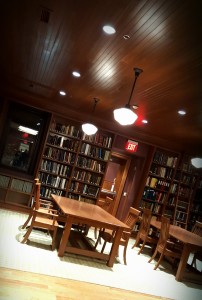Our ancestors led lives as complex as ours are today. They celebrated milestones and events just like we do; they weathered hardships similar to ours; and, their actions were driven by the same hopes and fears that we face today. We tend to think that in the ‘good ole days’ back when life was simple, our ancestors lived their entire lives in one place. Family and community were everything. Travel was always difficult and often dangerous. Wagons and saddle bags were the only means for moving belongings. But, colonists and immigrants were a hardy bunch. They’d already survived a trip across the Atlantic and they were adventurers at heart. As the land of the eastern part of our country filled up, our ancestors looked westward. The earliest among them were attracted to a frontier of abundant, virgin land. Later, the draw was industry and opportunity. Some received bounty land for military service, many moved for economic or politic reasons, others followed religious leaders. They migrated with extended family and friends and tended to follow established routes, many of which were laid out by Native Americans long before the colonists arrived. Studying the routes and learning about the push and pull factors of any given time period can help us better understand our forebears and provide clues to the origins of ancestors who seemingly appeared out of thin air.
Erie, Pennsylvania, is an ethnic melting pot. Early settlers were looking for land. Later, waves of immigrants from all over Europe and Asia were attracted by opportunities which arose as industry developed along the Great Lakes. Periods of heavy migration, particular to our region, stemmed from:
1. Seventeenth century New Englanders enticed by open land
2. Post American Revolution, military bounty land.
3. Early 1800s, development of industry along canals and railroads
The first two were primarily rural to rural. The last was usually rural to urban. If you have a general idea when your ancestor arrived in Erie, study the U.S. history of that period. Was there a war? Was there crop failure or economic crisis? What were the predominant roadways and water systems in place at the time. Using historical context, you may be able to trace your ancestor’s elusive origins, by working backwards. Study maps of the time period. Your ancestor may not have made the trip west all at once. It was much more common for migrants to stop along the way for months or even years at a time, while they earned the money needed to continue on their journey. There are two excellent resources for learning more about the specific trails and routes which impacted Erie:
Eldridge, Carrie. An Atlas of Appalachian Trails to the Ohio River. Huntington, WV: CDM Printing, 1998.Eldridge, Carrie. An Atlas of Northern Trails Westward from New England. Huntington, WV: CDM Printing, 2000.
In modern times, when migration was motivated by industry, ancestors can be followed through census records. But moves west before the 1850s are harder to trace. Erie’s population grew from migration along several well–known routes.
The primary early route west from New England was the Mohawk Trail, which followed the Mohawk River. Massachusetts colonists often took a military road known as the “Old Connecticut Path,” westward from Boston to Albany, across the Berkshires, where it joined with the Mohawk Trail. This route crossed the Hudson River and then took a northerly route through the Appalachian Mountains. Loyalists took these trails into Canada, during and immediately after the American Revolution. It was along this route that the Erie Canal and railroads were built, and later the Massachusetts and New York Thruways.
If your ancestors arrived in the mid to late 1800s, especially single young men, they may have come with the canal or railroad. Look along the New York Thruway to find towns where he might have stopped for a period of time.
Braddock’s Road was a southerly route west across the Appalachian Mountains. Developed as a military road during the French and Indian Wars, this route led from the southern colonies to the Pittsburgh area. It was a route taken by many Scotch–Irish, and it was also popular among trappers and traders, heading toward trading settlements in Ohio and Michigan. If your ancestors only stopped in Erie briefly, they could have been on their way farther west.
Forbes’ Road, also military in its origins, led from Philadelphia and Harrisburg, crossing the middle of Pennsylvania to arrive at Pittsburgh.
__________________________
Reference material for this article was found in Beverly Whitaker’s United States Migration Patterns, National Institute for Genealogical Studies, Toronto. Also, Ray Allen Billington’s Westward Expansion: a History of the American Frontier. 5th Ed. New York: Macmillan, 1982.




